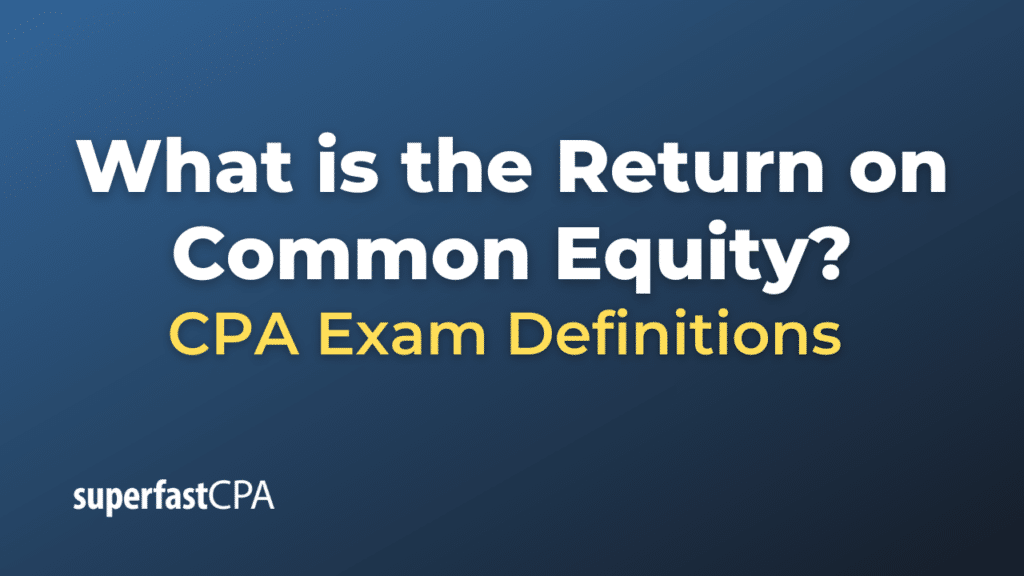Return on Common Equity
Return on Common Equity (ROCE) is a measure of a company’s profitability from its common equity. It indicates how effectively a company is using its common shareholders’ equity to generate profits. The ROCE formula is:
ROCE = Net Income – Preferred Dividends / Average Common Equity
Where:
- Net Income is the total profit of the company after all expenses and taxes have been deducted.
- Preferred dividends are dividends that are paid out to preferred shareholders. These dividends are subtracted because ROCE is focused on determining the profitability for common shareholders.
- Average Common Equity is typically calculated as the average between the beginning and ending common equity for a particular period (e.g., a fiscal year). Common equity is equal to total equity minus preferred equity.
The ROCE ratio provides insight into how well a company is managing its equity to produce earnings. A higher ROCE indicates that a company is more efficiently generating profits from its equity, which can be a positive signal to potential and current investors.
It’s important not to confuse ROCE (Return on Common Equity) with another similarly named metric, ROCE (Return on Capital Employed). Return on Capital Employed evaluates the efficiency with which a company uses its total capital (debt and equity) to generate profits. The formulas and the implications are different for each metric.
Example of the Return on Common Equity
Let’s walk through an example of calculating the Return on Common Equity (ROCE):
Company XYZ Financials for the Year:
- Net Income: $1,000,000
- Preferred Dividends: $100,000
- Common Equity at the Beginning of the Year: $4,000,000
- Common Equity at the End of the Year: $5,000,000
Steps to calculate ROCE:
- Calculate Average Common Equity:
Average Common Equity = Common Equity at the Beginning of the Year + Common Equity at the End of the Year / 2
Average Common Equity = 4,000,000 + 5,000,000 / 2 = 4,500,000
- Calculate the numerator (Net Income – Preferred Dividends):
Net Income – Preferred Dividends = 1,000,000 − 100,000 = 900,000
- Determine ROCE:
ROCE = Net Income – Preferred Dividends / Average Common Equity
ROCE = 900,000 / 4,500,000
ROCE = 0.20
When expressed as a percentage, ROCE is 20%. This means that Company XYZ generated a 20% return on its average common equity during the year.
In simple terms, for every dollar of common equity, Company XYZ generated $0.20 in net profits for its common shareholders, after accounting for the preferred dividends.













